Photographs: Kim Kyung-Hoon/Reuters Devjyot Ghoshal, Sharmistha Mukherjee in New Delhi
Toyota Prius, the world's best-known and highest-selling hybrid car, sold over two million units worldwide in the last 15 years but only 150 vehicles in India last fiscal. So far this financial year, not a single Prius has been driven out of a Toyota showroom in the country.
The Prius experience is illustrative of the dismal state of affairs in the electric vehicle arena in India, which has sales of a paltry 83,000 vehicles compared to over 4 million cars and scooters sold in the country.
That may change. The government is expected to roll out a policy for hybrid and electric vehicles (xEV) this April after over a year of consultations.
Yet, while all indicators for India's auto future point roughly in the 'electric' direction, India's blueprint for success may require adopting a balanced three-pronged strategy: create infrastructure; provide crucial subsidies; fund essential research and development (R&D) programmes.
India's auto sector is still waiting for an electric start
Photographs: Kim Kyung-Hoon/Reuters
For lessons on how to do this, we could look at China's recent electrifying performance. Between 2002 and 2006, Beijing spent at least $200 million on New Energy Vehicle (NEV) programmes, with plans to put out another $15.15 billion into an alternative energy vehicles development plan during 2011-2020, much of it going into bolstering R&D programmes, with the remainder to be spent on subsidies and infrastructure creation.
Undertaking such massive financial interventions is a strategy that has worked well for China, the world's largest car market by volume, and has helped it emerge as a frontrunner in the EV sect#8744 some forecasts even predict that China's EV market could grow to become the world's largest by the end of this decade.
In contrast, the first tangible governmental support for the xEV industry in India came only at the end of 2010, with the Ministry of New and Renewable Energy (MNRE) creating a minuscule Rs 95 crore ($19 million) incentive scheme for manufacturers and the government subsequently slashing the import duty on batteries from 26 per cent to four per cent.
...
India's auto sector is still waiting for an electric start
Photographs: Kim Kyung-Hoon/Reuters
The scheme provides for incentives of up to 20 per cent on the ex–factory prices of the vehicles, subject to a maximum limit, which is Rs 1 lakh for an electric car.
But it isn't merely the incredible disparity in monetary support that differentiates the trajectories that the two countries are taking.
China's automotive sector thrives on the collaborations that exist between strong domestic players and international majors, such as those between Germany's Volkswagen and Shenzhen-based BYD Automobile or General Motors and SAIC.
...
India's auto sector is still waiting for an electric start
Photographs: Vincent Kessler/Reuters
At the same time, the presence of some of the world's biggest rechargeable battery manufacturers, by virtue of the booming cell phone and laptop industries in China, alongside growing mobility demand in a country with serious environmental concerns, creates a near-perfect situation for the xEV market to thrive.
"In India, only Tata and Mahindra & Mahindra are domestic manufacturers of some reckoning. Any technology that comes in here would be driven by global manufacturers, rather than local R&D.
In China, the government has $15 billion to spend on EVs and the domestic players are strong enough to do the R&D," said Deepesh Rathode, Managing Director of IHS Automotive India.
...
India's auto sector is still waiting for an electric start
Since India has negligible volumes, little money and, so far, fleeting ambition to take a big (and expensive) leap into the xEV sector, Rathode is convinced that growth in the sector has to be infrastructure-driven.
Others, like Bill Russo, President of Beijing-based consultancy Synergistics, and a keen observer of the Chinese xEV market agrees. "I do believe infrastructure investment is a 'price of entry' which can drive market acceptance of a new technology," he says.
"This, by the way, was also true for gasoline powered cars in the early 20th century. Consumers need to know they can conveniently service and recharge their vehicles before they would even consider buying. Infrastructure is a 'foundation' for driving xEV market acceptance," he added.
...
India's auto sector is still waiting for an electric start
Indian EV makers, however, are pitching for higher subsidies to drive initial demand, on the premise that infrastructure can follow once there are enough such vehicles on the road.
Consumers, typically, are reluctant to buy xEVs that exceed the price of conventional vehicles by more than 10 to 15 per cent.
"There should be a good incentive for consumers. Once the demand side gets going, in turn it will make other things viable," said R Chandramouli, chief of operations, Mahindra Reva Electric Car Company, which sells between 30 to 40 units per month in the domestic market.
...
India's auto sector is still waiting for an electric start
Bangalore-based Reva, now a part of Mahindra & Mahindra, is the maker of one of the world's highest selling EVs -- the REVAi, which is exported to 24 countries. The carmaker is in the process of setting-up a 30,000 unit per annum plant, making it the single-largest electric car manufacturing facility anywhere in the world.
Pawan Goenka, president, automotive division and farm equipment sectors, Mahindra & Mahindra, is more explicit.
"Without the subsidy currently provided under the MNRE scheme it would be difficult to enthuse buyers to purchase electric vehicles. EVs have to be subsidised to encourage use by consumers. The quantum of the outlay made would determine how serious the government is about green vehicles," he said.
...
India's auto sector is still waiting for an electric start
There is little doubt that the government is serious. The National Hybrid / Electric Mobility Study, conducted by Booz & Company, on behalf of the Ministry of Heavy Industries and Public Enterprises and the Society of Indian Automobile Manufacturers (SIAM) makes a strong case for pushing the xEV sector in India.
It outlines the need interventions required to support the growth of the hybrid/electric market can be classified into five areas -- fuel efficiency regulations, demand-and-supply- related interventions, research and development support, and infrastructure investments.
"To achieve the tipping point for the market, the first step is to bridge this price–performance gap for consumers, and bring acceptable products into the market through demand side and supply side interventions. In parallel, the industry also needs to invest in building manufacturing and technology development capabilities. Along with this, power and charging infrastructure investments need to be made to facilitate adoption," a summary of the study states, adding that by 2020, a self-sustaining stage can be targeted for the industry.
...
India's auto sector is still waiting for an electric start
Photographs: Reuters
But it's the government's strategy, rather than its intent, that will be crucial in determining the eventual success of India's xEV push.
At the same time, any blueprint must also leverage the existing advantages that India Inc offers, much like how China's EV industry has benefited from the presence of large rechargeable battery manufacturers.
"India's largest potential opportunity is in the area of BEV 2W (Battery electric vehicle, two-wheeler) and HEV 4W (hybrid electric vehicle, four-wheeler) segments. These are areas where many Indian manufacturers, who understand the nuances of the market, can take the lead in offering frugally engineered and affordable solutions," explained Russo.
...
India's auto sector is still waiting for an electric start
Photographs: Tyrone Siu/Reuters
Reva's Chandramouli, too, felt that bringing the cost of EVs down is something that the Indian firms could achieve. "The difference India can make is to make EVs more affordable, and for it to happens there needs to more R&D in this segment".
In particular, there may be significant opportunities in the two-wheeler EV vertical, which could comprise between 3.5 to 5 million of the total 5 to 7 million EVs that may be annually sold in India by 2020, according to the Booz & Company study.
While the future of the Indian automotive sector may very well be down electric avenue, what remains to be seen is how we'll all get there.

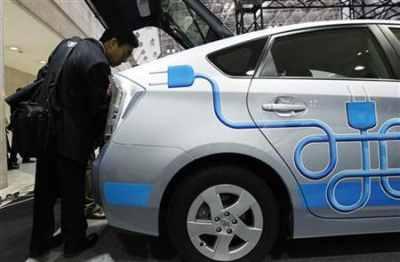

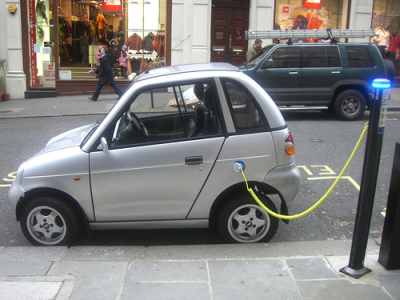
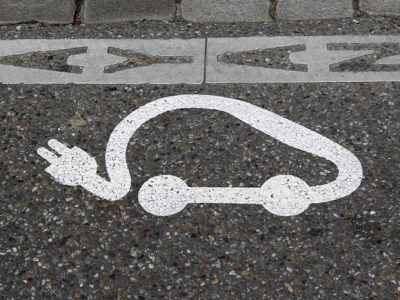
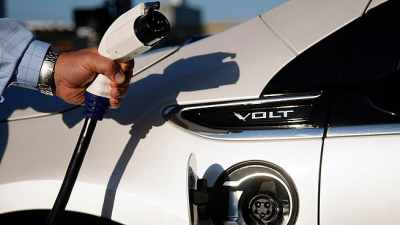
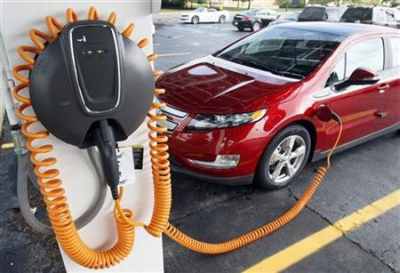

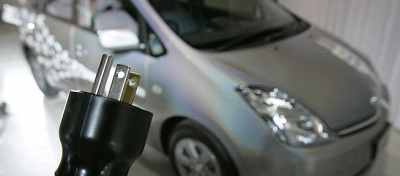

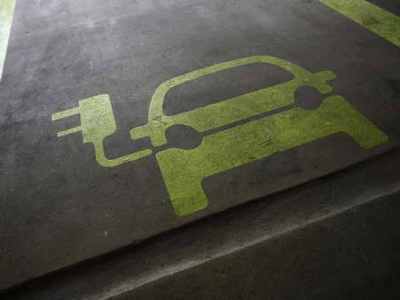

article